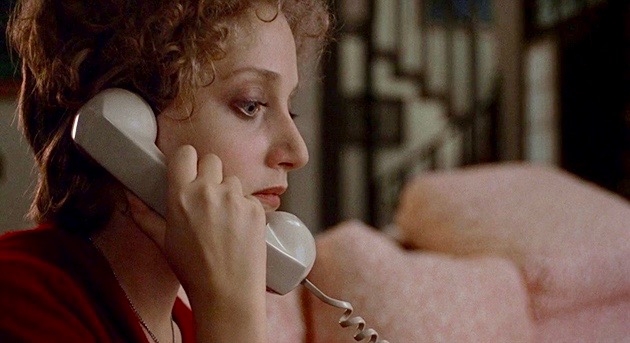When a Stranger Calls doesn’t particularly need to exist after its first twenty minutes, but those first twenty minutes are every bit as striking and scary as you would hope.
“The call is coming from inside the house” is an oft-told tale, even one that had already gotten memorable horror movie life as part of Black Christmas, and When a Stranger Calls uses that familiarity rather than avoiding it. No tricks here, no twists. Just inexorably building dread, because we know more about these phone calls than babysitter Jill (Carol Kane) does. The movie perfectly apes the structure and rhythms of this kind of campfire story; decades later, Wes Craven would riff on all this with Scream, but the Drew Barrymore sequence in Scream is about and for the movies, and it has movie dialogue and pacing. This doesn’t. This is straight folklore, straight oral tradition, and it’s all about coming back to that refrain: Have you checked the children?
The problem, of course, is that–at least when I used to hear it and tell it–the traditional version of this story doesn’t really have an ending. “The call is coming from inside the house” is the punchline; you drop the narrative off the cliff of the horror and put an end to it.
At this point, When a Stranger Calls runs into the fact that it’s supposed to be, y’know, a movie, so it somewhat awkwardly becomes one. (There’s one gorgeous, cruel bit of payoff here, when we learn that the intruder killed the children even before the first phone call; there’s something haunting, on a rewatch, about knowing they’re dead upstairs the whole time.) We meet the voice on the phone–troubled Curt Duncan (Tony Beckley)–and we meet the cop (Charles Durning) who’s obsessed with catching him. Slasher-adjacent horror movies in this era have an odd habit of briefly becoming police procedurals, like they don’t quite know what to do with themselves. Whatever the movie should be doing, this isn’t it–but the film does deliver a nice sense of grimy ’70s despair with its odd, slice-of-hardboiled-life middle section.
Right at the end, When a Stranger Calls figures itself out and delivers a strong horror movie ending, one that uses both its genre and its medium correctly. It’s a good way to go out–but the stark simplicity of the opening is what really lingers, which may mean that as much as we love the movies, they’re still not as hardwired into us as folklore is.

